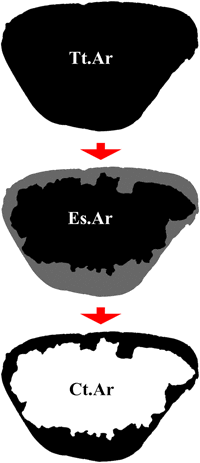Microdamage as a Bone Quality Component: Practical Guidelines for the Two-Dimensional Analysis of Linear Microcracks in Human Cortical Bone
- PMID: 31346569
- PMCID: PMC6636773
- DOI: 10.1002/jbm4.10203
Microdamage as a Bone Quality Component: Practical Guidelines for the Two-Dimensional Analysis of Linear Microcracks in Human Cortical Bone
Abstract
Microdamage is a component of bone quality believed to play an integral role in bone health. However, comparability between existing studies is fraught with issues due to highly variable methods of sample preparation and poorly defined quantification criteria. To address these issues, this article has two aims. First, detailed methods for preparation and analysis of linear microcracks in human ribs, specifically addressing troubleshooting issues cited in previous studies, are laid out. Second, new, partially validated criteria are proposed in an effort to reduce subjective differences in microcrack counts and measures, ensuring more comparable results between studies. Revised definitions based on current literature in conjunction with a digital atlas to reduce observer inaccuracy and bias are presented. The goal is to provide a practical methodology for bone biologists and biomechanists to collect and analyze linear microcracks for basic science research. © 2019 The Authors. JBMR Plus published by Wiley Periodicals, Inc. on behalf of American Society for Bone and Mineral Research.
Keywords: AGING; BONE HISTOMORPHOMETRY; FRACTURE RISK ASSESSMENT; INJURY.
Figures



References
-
- Office of the Surgeon General (US). Bone health and osteoporosis: a report of the Surgeon General. Rockville (MD): Office of the Surgeon General (US); 2004. [cited 2019 May 20]. Available from: https://www.ncbi.nlm.nih.gov/books/NBK45513/ - PubMed
-
- Bolotin HH. DXA in vivo BMD methodology: an erroneous and misleading research and clinical gauge of bone mineral status, bone fragility, and bone remodelling. Bone. 2007;41(1):138–54. - PubMed
-
- Heaney RP. Is the paradigm shifting? Bone. 2003;33(4):457–65. - PubMed
Publication types
LinkOut - more resources
Full Text Sources
